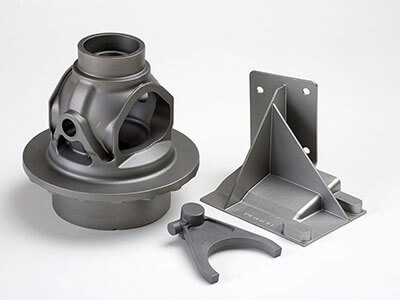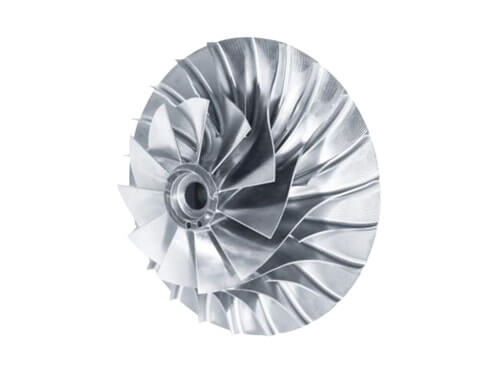What Is Sand Casting
Sand casting refers to a casting method in which castings are produced in sand molds. Steel, iron and most non-ferrous alloy castings can be obtained by sand casting methods. Because the modeling materials used in sand casting are cheap and easy to obtain, and the molds are easy to manufacture, they can adapt to single-piece production, batch production and mass production of castings. For a long time, it has been the basic process in casting production.
The basic raw materials for making sand molds are foundry sand and sand binder. The most commonly used foundry sand is siliceous sand. When the high-temperature performance of silica sand cannot meet the requirements of use, special sand such as zircon sand, chromite sand, and corundum sand are used. In order to make the finished sand mold and core have a certain strength and not be deformed or damaged during handling, molding and pouring of liquid metal, it is generally necessary to add a sand binder in the casting to bond the loose sand particles to form sand. The most widely used molding sand binder is clay, and various drying oils or semi-drying oils, water-soluble silicates or phosphates and various synthetic resins can also be used as molding sand binders. The outer sand molds used in sand casting are divided into three types: clay green sand, clay dry sand and chemical hardened sand according to the binder used in the sand and the way it builds its strength.
Clay Wet Sand
Clay and an appropriate amount of water are used as the main binder for molding sand. After the sand is made, it is directly combined and poured in a wet state. Wet casting has a long history and is widely used. The strength of green sand depends on the clay slurry formed by mixing clay and water in a certain proportion. Once the molding sand is mixed, it has a certain strength. After being pounded into a sand mold, it can meet the requirements of molding and pouring. Therefore, the amount of clay and moisture in the molding sand are very important process factors.
A casting method in which molding sand and core sand are used as molding materials to make a mold, and liquid metal is filled with the mold under gravity to produce a casting. Steel, iron and most non-ferrous alloy castings can be obtained by sand casting methods. Because the molding materials used in sand casting are cheap and easy to obtain, and the molds are easy to manufacture, they can adapt to single-piece production, batch production and mass production of castings. For a long time, it has been the basic process in casting production.
The mold used in sand casting is generally composed of a combination of an outer sand mold and a core. In order to improve the surface quality of castings, a layer of paint is often applied to the surface of the sand mold and core. The main components of the coating are powdery materials and binders with high refractoriness and good chemical stability at high temperatures. In addition, a carrier (water or other solvents) and various additives are added for easy application.
The advantages of clay green sand casting are:
– Clay is rich in resources and low in price.
– Most of the used clay wet sand can be recycled and reused after proper sand treatment.
– The cycle of manufacturing the mold is short and the work efficiency is high.
– The mixed molding sand can be used for a long time.
– After the sand mold is pounded, it can still tolerate a small amount of deformation without being damaged, which is very beneficial for drafting and core setting.
Weakness is:
– To coat the viscous clay slurry on the surface of the sand grains during sand mixing, high-power sand mixing equipment with kneading action is required, otherwise it is impossible to obtain good quality sand.
– Since the molding sand has very high strength after being mixed, the molding sand is not easy to flow during modeling and it is difficult to pound. It is laborious and requires certain skills when modeling by hand, and the equipment is complicated and huge when modeling by machine.
– The rigidity of the mold is not high, and the dimensional accuracy of the casting is poor.
– Castings are prone to defects such as sand washing, sand inclusion and pores.
Clay dry sand molds have a slightly higher wet moisture content than those used in the production of this sand mold.
Clay sand core is a simple core made of clay sand.
Dry Clay Sand
The wet moisture of the molding sand used to make this sand mold is slightly higher than that of the wet molding sand. After the sand mold is made, the surface of the cavity should be coated with refractory paint, and then placed in an oven for drying, and after it has cooled down, it can be molded and poured. It takes a long time to dry clay sand molds, consumes a lot of fuel, and the sand molds are easily deformed during the drying process, which affects the accuracy of castings. Clay dry sand molds are generally used to make steel castings and larger iron castings. Since chemically hardened sand has been widely adopted, dry sand types have tended to be eliminated.
Chemically Hardened Sand
The molding sand used in this type of sand is called chemically hardened sand. The binder is generally a substance that can polymerize molecules and become a three-dimensional structure under the action of a hardener, and various synthetic resins and water glass are commonly used. There are basically 3 ways of chemical hardening.
– Self-Hardening: The binder and hardener are both added during sand mixing. After the sand mold or core is made, the binder reacts under the action of the hardener to cause the sand mold or core to harden by itself. The self-hardening method is mainly used for modeling, but it is also used to manufacture larger cores or cores with small production batches.
– Aerosol Hardening: Add binder and other auxiliary additives when mixing sand, without adding hardener first. After modeling or core making, blow in gaseous hardener or liquid hardener atomized in the gas carrier to disperse it in the sand mold or core to cause the sand mold to harden. The aerosol hardening method is mainly used to make cores, and is sometimes used to make small sand molds.
– Heating Hardening: Add binder and latent hardening agent that does not work at room temperature when mixing sand. After the sand mold or core is made, it is heated. At this time, the latent hardener reacts with certain components in the binder to generate an effective hardener that can harden the binder, thereby hardening the sand mold or core. The heating hardening method is mainly used to make cores in addition to the manufacture of small thin-shell sand molds.


